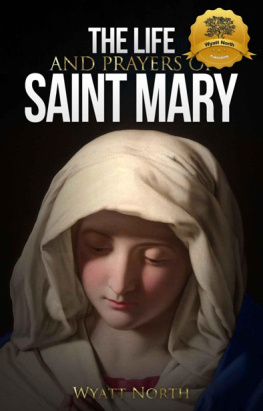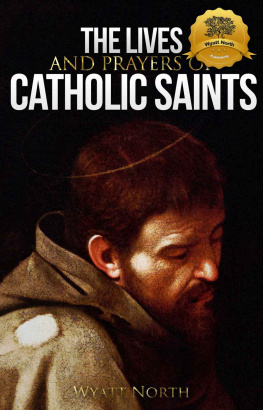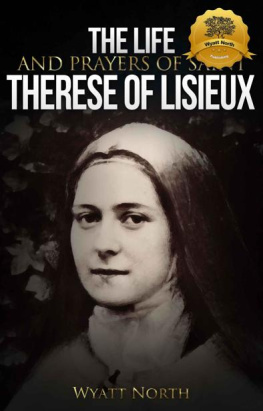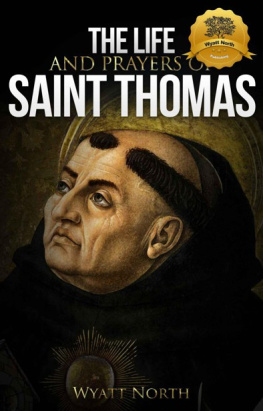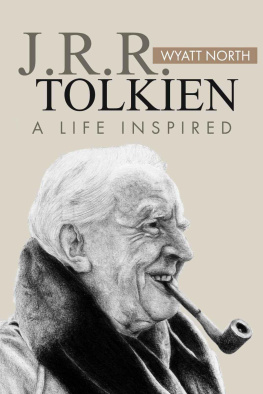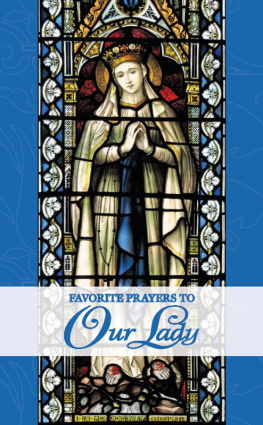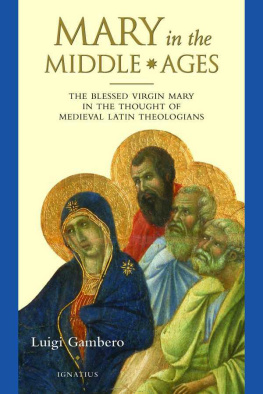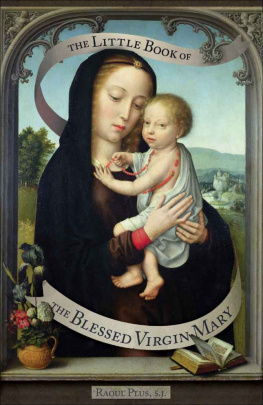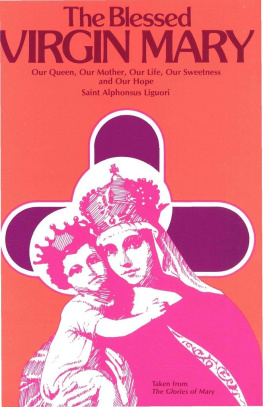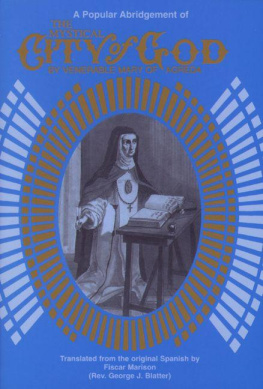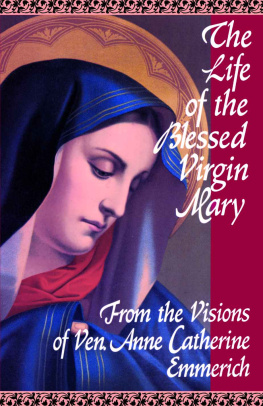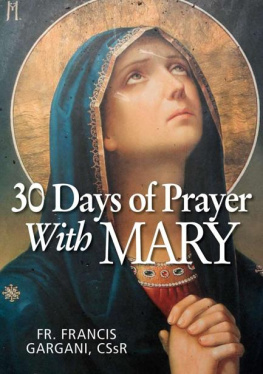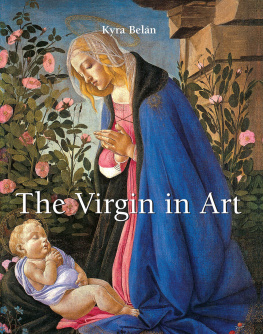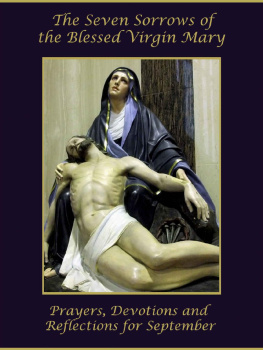
Wyatt North Publishing, LLC 2012
Publishing by Wyatt North Publishing, LLC. A Boutique Publishing Company.
Wyatt North and A Boutique Publishing Company are trademarks of Wyatt North Publishing, LLC.
Copyright Wyatt North Publishing, LLC. All rights reserved, including the right to reproduce this book or portions thereof in any form whatsoever. For more information please visit http://www.WyattNorth.com .
Cover design by Wyatt North Publishing, LLC. Copyright Wyatt North Publishing, LLC. All rights reserved.
Scripture texts in this work are taken from the New American Bible, revised edition 2010, 1991, 1986, 1970 Confraternity of Christian Doctrine, Washington, D.C. and are used by permission of the copyright owner. All Rights Reserved. No part of the New American Bible may be reproduced in any form without permission in writing from the copyright owner.
About Wyatt North Publishing
Wyatt North Publishing is a boutique publishing company. We always provide high quality, perfectly formatted, Books.
All of our eBooks include a Touch-or-Click Table of Contents, allowing easy and instant access to each section.
We guarantee our Books. If you are not 100% satisfied we will do everything in our power to make you happy. Visit .
Free eBooks
Never miss a free book from Wyatt North, and receive FREE inspirational eBooks for your eReader!
Thousands of readers have already joined. Sign up for free today.
Click here for free eBook offers!
Introduction
It is difficult in this day and age to imagine Christianity without the beneficent presence of the Blessed Virgin.
Next to Christ, of all those who grace the pages of the New Testament, Mary is perhaps the one who touches us the most. Her motherly love often allows even the doubting to approach her.
Her story an unprepared teenage girl, charged with a daunting task and the scorn of her community, raising a son knowing always that she cannot protect him from the fate that will rob her of him elicits our empathy.
She inspires not only devotion and meditation, having mysteries and ritual of her own, but also song and poetry.
The Life of Blessed Virgin Mary
Introduction
It is difficult in this day and age to imagine Christianity without the beneficent presence of the Blessed Virgin. Next to Christ, of all those who grace the pages of the New Testament, Mary is perhaps the one who touches us the most. Her motherly love often allows even the doubting to approach her. Her story an unprepared teenage girl, charged with a daunting task and the scorn of her community, raising a son knowing always that she cannot protect him from the fate that will rob her of him elicits our empathy. She inspires not only devotion and meditation, having mysteries and ritual of her own, but also song and poetry.
However, this was not always the case. If we look to the New Testament, written in the years immediately following the end of Mary's earthly life, it contains very little information about Mary. She makes few appearances in the four canonical gospels, outside of which she is only mentioned in passing, once in the Acts of the Apostles . The Apostle Paul notably does not write of her at all. The man or woman who seeks to know Mary through her earthly life must look outside of the Bible as we know it today.
The earliest known text to focus on Mary was produced probably sometime around 145 AD and is known as the Protoevangelicum of James . It was a highly popular text, which claimed to have been produced by James, the brother of Christ. The authorship, though not the contents of the text, were questioned even in the early 3rd century. It remains questioned today, as its author appears unfamiliar with the Jewish culture that the true James must have grown up in.
The Protoevangelicum of James tells of Mary's birth and early life, up until the birth of Jesus. Its contents are echoed in other early Christian apocrypha, such as the Infancy Gospel of Thomas. A complete biographical text about Mary, however, was not written until the 7th century. It is known as the Life of the Virgin by Saint Maximus the Confessor, and comes down to us in a single copy.
Since then, Mary's life has been written down numerous times by pious men. Even seemingly simple facts often diverge. Some accounts are clearly written as interpretations of earlier works. Some accounts are inspired by prayer and visions, as is the case of the 19th century work the Life of the Blessed Virgin Mary by Blessed Anne Catherine Emmerich, a German nun who suffered stigmata and had visions of the Virgin's life.
This naturally complicates matters for the reader, who instead of one life of the Virgin finds several lives. In this light, the approachable Mother can at times seem very far away, and the path to find her can be anything but straightforward.
The reader's quest is further complicated by the many interpretations available, of denominations both historical and contemporary, and even of multiple faiths. As we consider the life of the Virgin, we will keep this in mind. But when considering the traditions and sources to use, we will focus on those that have been the most influential and whose authors have exercised great influence on the course of faith and our understanding of the Virgin Mary.
This precludes versions of her life that are contemporary to us, or which have been produced by modern minority groups, such as the New Age movement. One day, those may indeed prove to have been influential in the worldwide understanding of the life of the Virgin Mary, but as we cannot divine the future we will work with the past.
And since we are seeking to understand a life, we will start at the very beginning.
A Girl with a Great Destiny
By the time we first meet Mary in the canonical sources, she is already a teenager, betrothed, and about to find out that she is going to be a mother. The evangelists provide us with no hint as to where she might have come from, who her parents might have been, or what her social status was. She is merely presented as a virgin of marriageable age.
It is when we step outside of the Bible and into the apocrypha that we meet a much younger Mary. These sources, starting with the second century Protoevangelicum of James , take us far back in time and to the weeks preceding Mary's conception. They tell us that Mary's parents were called Joachim and Anna.
Joachim was a tremendously rich man. He was a generous man, who gave freely of his riches, but he was only a man and knew that he was touched by sin, like everyone else. On a feast day, he wished to bring offerings for forgiveness before the Lord along with all the other men of Israel, but he was prevented by the priests because he still had not done what is good in the eyes of the Lord: produced an offspring.
Joachim was terribly grieved and felt that the priests were treating him unjustly. How could he be the only man not allowed to present his offering before the Lord? Joachim then sought out the register of the twelve tribes of Israel, only to find that he was indeed the only righteous man of Israel who had not yet produced a child. But Joachim was also old and it was not for lack of trying that his home was without a child. He decided to turn to the Lord, and went into the desert where he fasted for forty days and forty nights.
Joachim's wife, Anna, was also grieved. She feared that the physical ordeal of fasting in the heat of the desert would kill her husband and leave her not only childless but also a widow. Premature as it were, Anna went into a state of mourning. It was her maidservant who pleaded with her to stop, for it was unlawful to mourn, she said, on that great day of the Lord. So, Anna took off her mourning garb, washed herself and put on the dress she had worn on her wedding, and she walked into the garden, sat beneath a laurel tree and prayed to God for a child.
Next page
